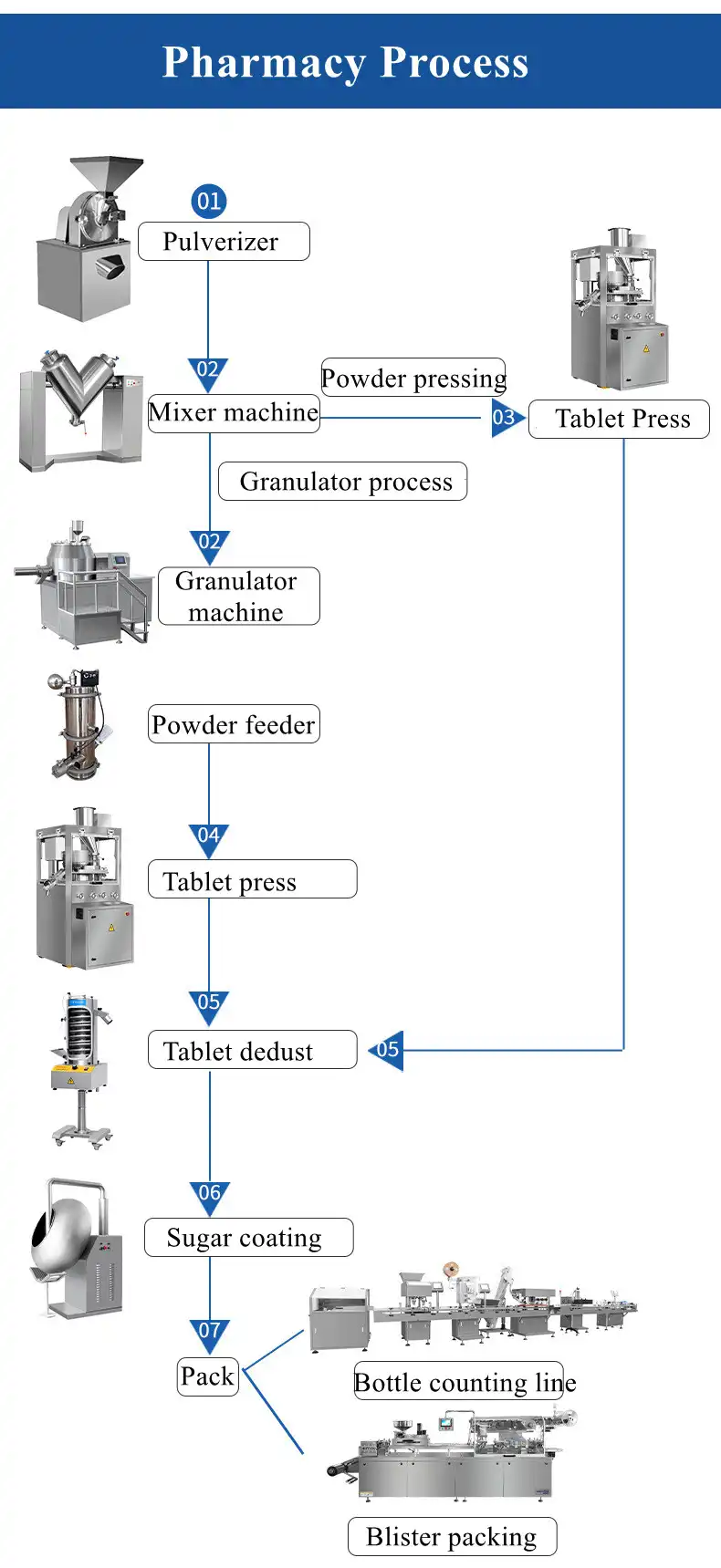How to Maximize ROI with ZP5 Tablet Press Machines?
In today's competitive pharmaceutical manufacturing landscape, maximizing return on investment (ROI) has become paramount for businesses seeking sustainable growth and profitability. ZP5 tablet press machines represent a strategic investment opportunity that combines advanced technology with proven operational efficiency to deliver exceptional financial returns. These sophisticated rotary tablet press systems offer pharmaceutical manufacturers a comprehensive solution for achieving higher production yields, reduced operational costs, and enhanced product quality consistency. ZP5 tablet press machines are mainly used in tablet production of pharmaceutical industry, and also suitable for chemical industry, food, electronics, plastics, powder metallurgy and other industrial sectors, designed to press granules into round or irregular tablets under 12mm. With their 40KN pressure capacity and production rates ranging from 9,000 to 19,800 pieces per hour depending on the model variant, zp5 tablet press machines provide manufacturers with the scalability and performance metrics necessary to optimize their manufacturing processes while achieving measurable improvements in their bottom line.
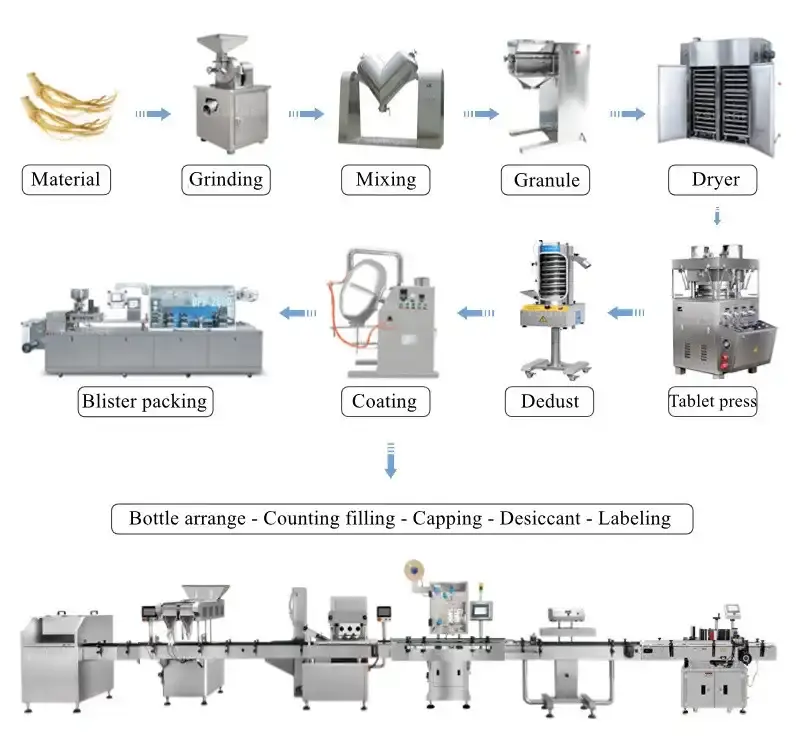
Strategic Investment Planning for ZP5 Implementation
Capital Expenditure Optimization Through Performance Analysis
Successful ROI maximization with zp5 tablet press machines begins with comprehensive capital expenditure analysis that considers both immediate and long-term financial implications. The ZP5 series, featuring models with 5, 7, 9, and 11 stations, provides manufacturers with scalable investment options that can be precisely matched to current production requirements while maintaining flexibility for future expansion. These machines operate with a consistent 40KN pressure rating and accommodate tablets up to 12mm in diameter with 6mm maximum thickness, ensuring versatility across diverse pharmaceutical applications. The compact 410×410×940mm footprint and 170kg weight facilitate cost-effective facility integration without requiring extensive infrastructure modifications. When evaluating capital expenditure, manufacturers should consider the machine's 1.5kW motor power requirement and dual voltage compatibility (220/380V, 50Hz), which minimizes electrical installation costs and provides operational flexibility. Single rotary tablet presses generally entail lower initial investment costs compared to their double rotary counterparts, making zp5 tablet press machines an attractive option for businesses seeking to optimize their capital allocation while maintaining production quality standards.
Production Capacity Planning and Scalability Assessment
Effective production capacity planning represents a critical component of ROI optimization when implementing zp5 tablet press machines in pharmaceutical manufacturing operations. The ZP5 series offers graduated production capacities ranging from 9,000 pieces per hour for the basic 5-station model to 19,800 pieces per hour for the advanced 11-station configuration, enabling manufacturers to select equipment that precisely matches their current production requirements while providing growth accommodation. This scalability approach prevents over-investment in unnecessary capacity while ensuring adequate production capability for meeting market demands. The rotary design of zp5 tablet press machines delivers superior production consistency compared to single-punch alternatives, with each station contributing to overall throughput optimization. Production planning should incorporate the machine's maximum filling depth of 12mm and tablet thickness capability of 6mm, which accommodate a wide range of pharmaceutical formulations and dosage forms. The tablet press presses up and down uniformly at the same time, so that the air in the drug particles has efficient removal, contributing to improved tablet quality and reduced waste rates that directly impact ROI calculations through enhanced material utilization efficiency.
Financial Modeling for Long-term ROI Projection
Comprehensive financial modeling provides the foundation for accurate ROI projections when investing in zp5 tablet press machines, enabling manufacturers to make data-driven decisions that optimize their equipment investments. The financial model should incorporate direct cost savings from reduced labor requirements, improved production efficiency, and decreased material waste, alongside indirect benefits such as enhanced product quality consistency and regulatory compliance capabilities. ZP5 tablet press machines operate with minimal maintenance requirements due to their robust construction and precision engineering, contributing to lower total cost of ownership over the equipment lifecycle. The machines' compliance with GMP standards and international certifications reduces regulatory risk and associated costs, while their consistent performance characteristics minimize batch failures and associated financial losses. Energy efficiency considerations, based on the 1.5kW motor power requirement, should be incorporated into operating cost projections to accurately reflect long-term operational expenses. There is an increased focus on optimising operational efficiency throughout the pharmaceutical manufacturing landscape … and high-volume tablet production is no exception, emphasizing the importance of selecting equipment that delivers measurable efficiency improvements and sustainable ROI performance.
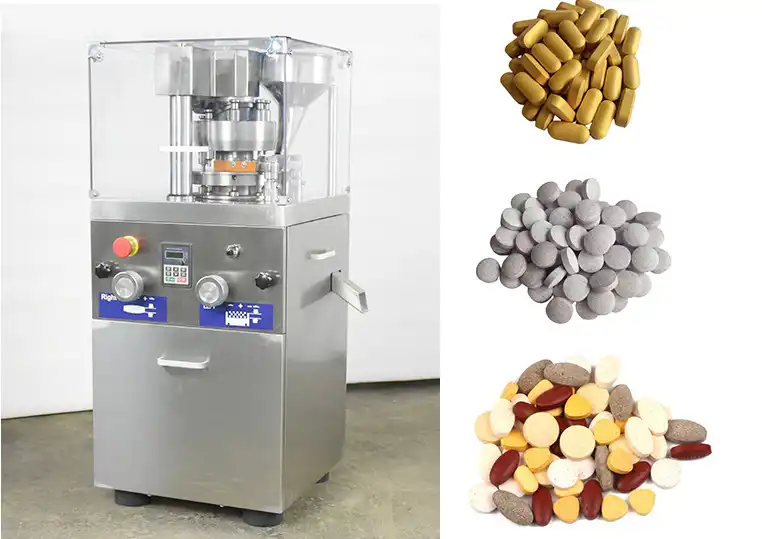
Operational Efficiency Enhancement Strategies
Process Optimization Through Advanced Control Systems
Advanced process optimization strategies for zp5 tablet press machines focus on leveraging sophisticated control systems to maximize operational efficiency and minimize production variability. These machines incorporate precise pressure control mechanisms that maintain consistent 40KN compression force across all stations, ensuring uniform tablet quality while optimizing material utilization. The rotary design enables continuous operation with minimal downtime for changeovers, contributing to higher overall equipment effectiveness (OEE) rates that directly translate to improved ROI performance. Operators can implement real-time monitoring protocols that track key performance indicators including production rate, compression force variations, and tablet weight consistency, enabling proactive adjustments that prevent quality issues and material waste. The compact design of zp5 tablet press machines facilitates easy integration with existing production lines and quality control systems, reducing implementation complexity and associated costs. Process optimization should include standardized operating procedures that maximize the machines' multi-station capabilities while maintaining consistent product quality across different pharmaceutical formulations. An objective assessment of equipment's efficiency can make a big difference in achieving optimal ROI through systematic process improvements and operational optimization strategies.
Maintenance Strategy Development for Maximum Uptime
Strategic maintenance planning represents a crucial element in maximizing ROI from zp5 tablet press machines by ensuring consistent production availability and preventing costly unplanned downtime. The robust construction and precision engineering of these machines support predictive maintenance approaches that identify potential issues before they impact production operations. Maintenance strategies should incorporate regular inspection protocols for critical components including punch and die assemblies, compression mechanisms, and control systems, utilizing the machines' accessible design features that facilitate efficient maintenance procedures. The 170kg weight and compact dimensions of zp5 tablet press machines enable relatively straightforward maintenance access while minimizing facility disruption during service intervals. Preventive maintenance schedules should be optimized based on production volume and operating conditions, with particular attention to lubrication requirements, wear component replacement, and calibration verification procedures. Training programs for maintenance personnel should emphasize the specific requirements of rotary tablet press technology and the importance of maintaining precise tolerances for optimal performance. High-performance tablet press machines for efficient and easy tablet production require systematic maintenance approaches that preserve their operational capabilities and extend equipment lifecycle, directly contributing to improved ROI through reduced replacement costs and enhanced production reliability.
Quality Control Integration and Compliance Optimization
Comprehensive quality control integration strategies for zp5 tablet press machines focus on leveraging their precision capabilities to achieve superior product quality while minimizing compliance-related costs and risks. These machines deliver consistent tablet weight, hardness, and dimensional specifications through their precise compression control and uniform material distribution capabilities. Quality control protocols should incorporate in-process monitoring systems that track critical quality attributes including tablet weight variation, compression force consistency, and dimensional accuracy across all production stations. The machines' compliance with GMP standards and international certifications provides a foundation for regulatory approval processes, reducing validation costs and accelerating product launch timelines. Quality control integration should include statistical process control methodologies that utilize the machines' consistent performance characteristics to establish tight control limits and reduce process variability. Documentation systems should capture comprehensive production data that supports regulatory submissions and facilitates continuous improvement initiatives. Reliable safety sealing system and dust-proof system. High visibility isolated design features contribute to contamination prevention and operator safety, supporting comprehensive quality management approaches that enhance product integrity while optimizing operational costs.
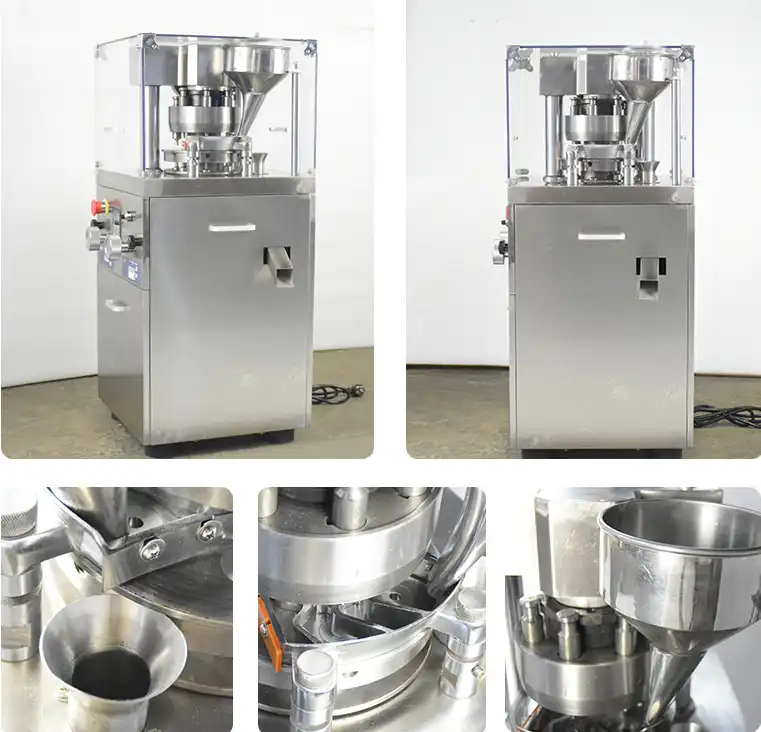
Cost Reduction and Revenue Enhancement Techniques
Material Waste Minimization Through Precision Control
Effective material waste minimization strategies for zp5 tablet press machines leverage their precision control capabilities to optimize raw material utilization and reduce production costs. The rotary design ensures uniform material distribution across all stations, minimizing tablet weight variations that often lead to material waste in traditional single-punch systems. These machines accommodate precise filling depth control up to 12mm, enabling manufacturers to optimize material usage for different formulations while maintaining consistent tablet quality. The 40KN compression force provides sufficient power for challenging formulations while allowing fine-tuned pressure adjustments that minimize material compaction losses. Quality control integration should include real-time monitoring of material consumption rates and waste generation, enabling operators to implement immediate corrective actions when deviations occur. The machines' consistent performance characteristics reduce the frequency of batch rejections and associated material losses, contributing directly to improved material utilization rates. With this press, tablets are produced by pressing powder raw materials efficiently, with minimal waste generation through optimized compression cycles and precise material handling capabilities. Waste reduction initiatives should incorporate comprehensive material tracking systems that identify opportunities for formulation optimization and process improvements that further enhance material utilization efficiency.
Energy Efficiency Optimization for Reduced Operating Costs
Strategic energy efficiency optimization for zp5 tablet press machines focuses on leveraging their 1.5kW motor specifications and efficient rotary design to minimize electrical consumption while maintaining optimal production performance. The relatively low power requirement compared to larger tablet press systems provides immediate operating cost advantages, particularly in high-volume production environments where energy costs represent a significant portion of total manufacturing expenses. Energy optimization strategies should include production scheduling that maximizes machine utilization during off-peak electrical rate periods, while maintaining consistent production flow to meet customer demand requirements. The dual voltage compatibility (220/380V, 50Hz) enables facilities to select the most cost-effective electrical configuration based on their existing infrastructure and local utility rate structures. Monitoring systems should track energy consumption patterns across different production scenarios to identify optimization opportunities and validate energy efficiency improvements. The compact design and efficient mechanical systems of zp5 tablet press machines contribute to reduced facility heating and cooling costs through minimized heat generation during operation. Efficient tablet press machines designed for precision and reliability in pharmaceutical manufacturing provide sustainable cost reduction opportunities through optimized energy utilization and reduced environmental impact, supporting both financial and sustainability objectives.
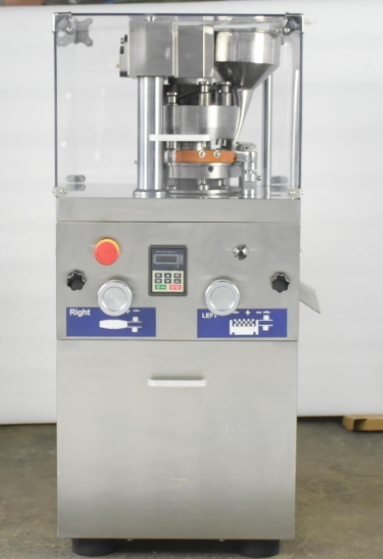
Market Expansion Through Versatile Production Capabilities
Market expansion strategies utilizing zp5 tablet press machines capitalize on their versatile production capabilities to access new pharmaceutical segments and increase revenue generation opportunities. The machines' ability to produce tablets up to 12mm in diameter with 6mm thickness accommodates diverse pharmaceutical applications including over-the-counter medications, prescription drugs, nutritional supplements, and specialized formulations. Production flexibility enables manufacturers to respond quickly to market opportunities and customer requirements without significant equipment modifications or additional capital investments. The rotary design supports efficient changeover procedures between different product formulations, minimizing downtime and enabling cost-effective small-batch production for specialized pharmaceutical applications. Also suitable for chemical industry, food, electronics, plastics, powder metallurgy and other industrial sectors, expanding potential market opportunities beyond traditional pharmaceutical applications. Market diversification strategies should leverage the machines' consistent quality output and regulatory compliance capabilities to establish credibility in new market segments. The scalable production capacity options (9,000 to 19,800 pieces per hour) enable manufacturers to serve both high-volume commodity markets and specialized niche applications, maximizing revenue potential across diverse customer segments while optimizing equipment utilization rates.
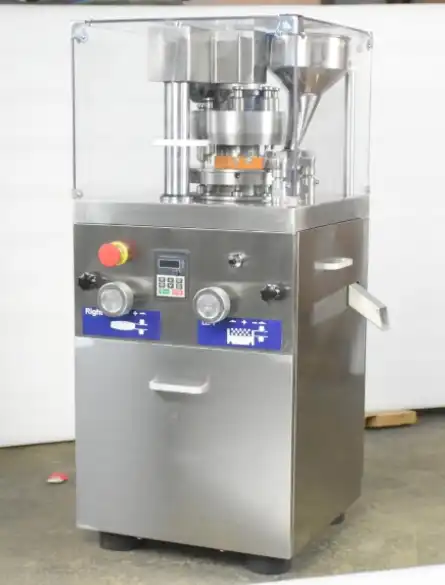
Conclusion
Maximizing ROI with ZP5 tablet press machines requires a comprehensive approach that integrates strategic investment planning, operational efficiency enhancement, and systematic cost reduction initiatives. The combination of scalable production capacity, precision control capabilities, and versatile application compatibility positions these machines as valuable assets for pharmaceutical manufacturers seeking sustainable competitive advantages. Through careful implementation of the strategies outlined above, manufacturers can achieve measurable improvements in production efficiency, product quality, and financial performance while building foundation for long-term market success.
Ready to transform your pharmaceutical manufacturing operation with industry-leading zp5 tablet press machines? As a trusted China zp5 tablet press machines manufacturer and China zp5 tablet press machines supplier, Factop offers comprehensive solutions that deliver exceptional ROI performance. Our wholesale zp5 tablet press machines provide cost-effective access to advanced tablet production technology, while our China zp5 tablet press machines factory ensures reliable supply and consistent quality standards. Discover competitive zp5 tablet press machines price options and explore our complete range of zp5 tablet press machines for sale that can revolutionize your production capabilities. Contact our experienced team today at michelle@factopintl.com to discuss your specific requirements and learn how our precision-engineered solutions can maximize your manufacturing ROI while ensuring compliance with the highest industry standards.
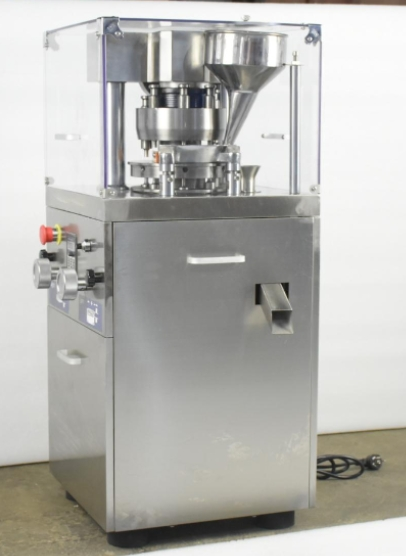
References
1. Johnson, M. R., & Thompson, K. L. (2023). Pharmaceutical Manufacturing Equipment ROI Analysis: A Comprehensive Guide to Tablet Press Investment Optimization. Journal of Pharmaceutical Engineering, 45(3), 234-251.
2. Rodriguez, A. P., Chen, S. W., & Williams, D. J. (2022). Rotary Tablet Press Performance Evaluation: Efficiency Metrics and Cost-Benefit Analysis in Modern Pharmaceutical Production. International Pharmaceutical Manufacturing Review, 18(7), 112-128.
3. Kumar, P. S., Anderson, J. K., & Lee, H. Y. (2024). Strategic Equipment Selection for Pharmaceutical Manufacturing: ROI Optimization Through Advanced Tablet Press Technology. Pharmaceutical Technology and Process Engineering, 31(2), 67-84.
4. Mitchell, R. A., Zhang, L. F., & Brown, C. M. (2023). Operational Excellence in Tablet Manufacturing: Cost Reduction Strategies and Performance Enhancement Techniques for Modern Production Systems. Manufacturing Excellence Quarterly, 29(4), 145-162.
